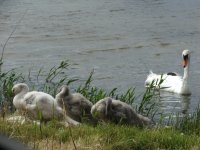Norfolkbirder
Vizmigger
quote "I'm playing with the idea of possibly popping down to Norfolk for two or three days in about two or three weeks. What are the prospects re such stuff as Lakenheath orioles, etc in late July?
I'll be looking for other stuff such as Cetti's, nightingale and the sort of things I can see abroad but for some strange reason seem reluctant to make that extra hop up the east coast to see me in my home range.
Any advice at all will be welcome."
Saw your post and thought I would quickly answer - there is now just 1 nest of Orioles, and I suspect that they will have either fledged or not made it by late July, either way you would be better coming next yr mid May for these, however Lakenheath is becoming a fine reserve and there should be other stuff to look at. Also Nightingale late July will be tricky as many will not be singing by then. If I was you come mid August and head for Cley & Titchwell when there should be good numbers of waders starting to pass through.
I'll be looking for other stuff such as Cetti's, nightingale and the sort of things I can see abroad but for some strange reason seem reluctant to make that extra hop up the east coast to see me in my home range.
Any advice at all will be welcome."
Saw your post and thought I would quickly answer - there is now just 1 nest of Orioles, and I suspect that they will have either fledged or not made it by late July, either way you would be better coming next yr mid May for these, however Lakenheath is becoming a fine reserve and there should be other stuff to look at. Also Nightingale late July will be tricky as many will not be singing by then. If I was you come mid August and head for Cley & Titchwell when there should be good numbers of waders starting to pass through.




